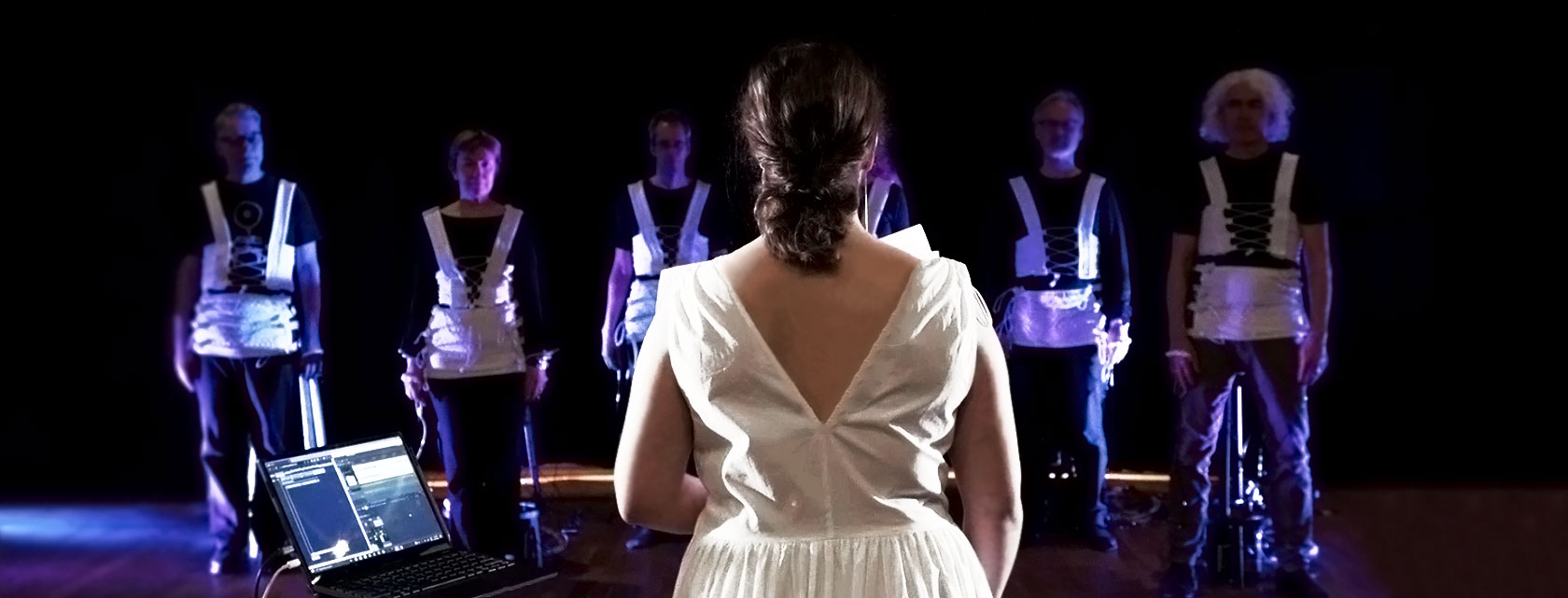New clothing design mimics muscles used when singing

Researchers develop garment that can emulate what it feels like when someone is singing, breaking new ground in making performing arts more interactive and immersive.
A robotic upper body garment called the Corsetto can be the first step towards a completely new concert experience. It not only mimics the bodily movements of the singer but also offers the audience a way to feel the physical efforts of the performance. It reflects the physical gestures triggered by a singer’s vocal expressions.
The design is a collaboration between researchers at the Massachusetts Institute of Technology (MIT), KTH, Simon Fraser University, Northeastern University, Research Institutes of Sweden and the Chalmers University of Technology.
The work was led by Ozgun Kilic Afsar, a research assistant at the Massachusetts Institute of Technology Media Lab and a former doctoral student at KTH.
‘Feeling the whole performance’
The researchers wanted to develop a mediating technology that would allow audience members to feel the muscular movements, tensions and engagements when singing. They teamed up with a professional opera singer and designed a corset capable of emulating and communicating the nuances of a singing body.
The corset comprises hardware and software that recreates movements using air-driven artificial muscles.
“It’s like feeling the whole performance of the singer,” says Afsar, the lead author behind a study published for the 2023 ACM SIGCHI CHI conference in Hamburg.
The design took roughly a year to develop and was tested on 30 different bodies.
Connecting on a new level
The purpose of the study is not only to mirror the singer’s efforts but to explore what the researchers call intercorporeality, a term used to describe the process when bodies become mediators of a performative experience.
“We were able to translate tacit experiential knowledge within our bodies to build a completely new experience,” Afsar adds.
With her colleagues, Afsar hopes the design can spur new innovations within technology-enabled incorporeality.
“Performers can share and connect with their audience on a whole new level,” Afsar concludes.
Read more about Afsar's work via MIT Media Lab
You have previously denied the display of content of the type "External media". Do you want to show content?
Text: Sturle Hauge Simonsen
Related news

KTH researchers developing new approaches to robotics
Robotics has the potential to unlock large benefits for society, but new applications, such as assistive robotics functions in healthcare require fundamental breakthroughs in how robots reason and int...
Read the article
New clothing design mimics muscles used when singing
Researchers develop garment that can emulate what it feels like when someone is singing, breaking new ground in making performing arts more interactive and immersive.
Read the article